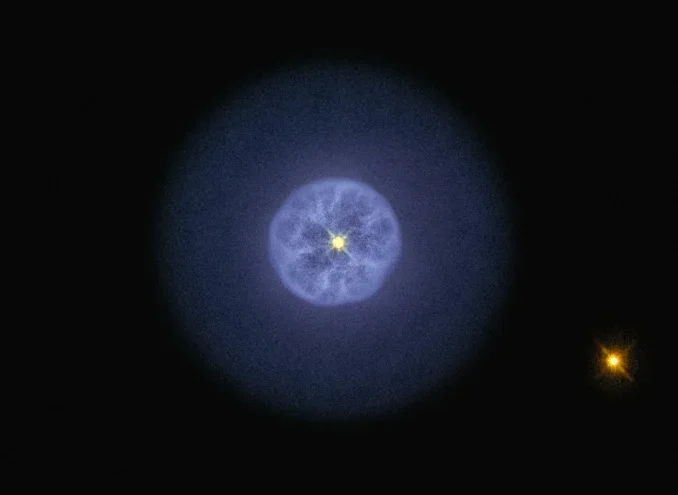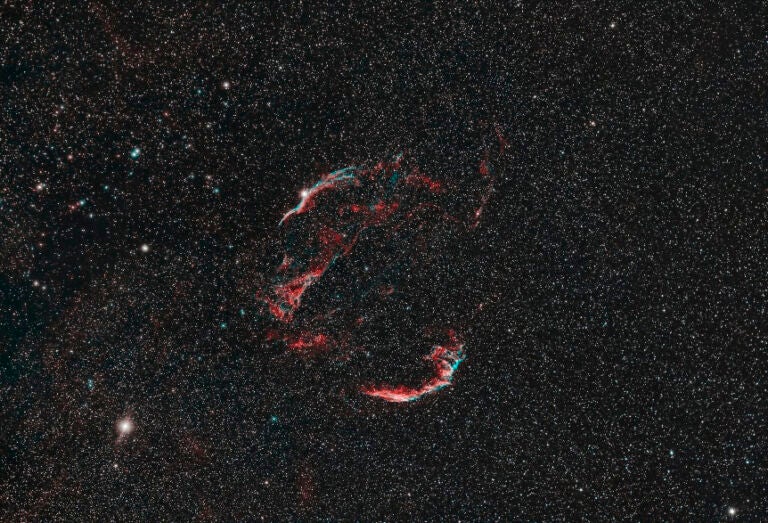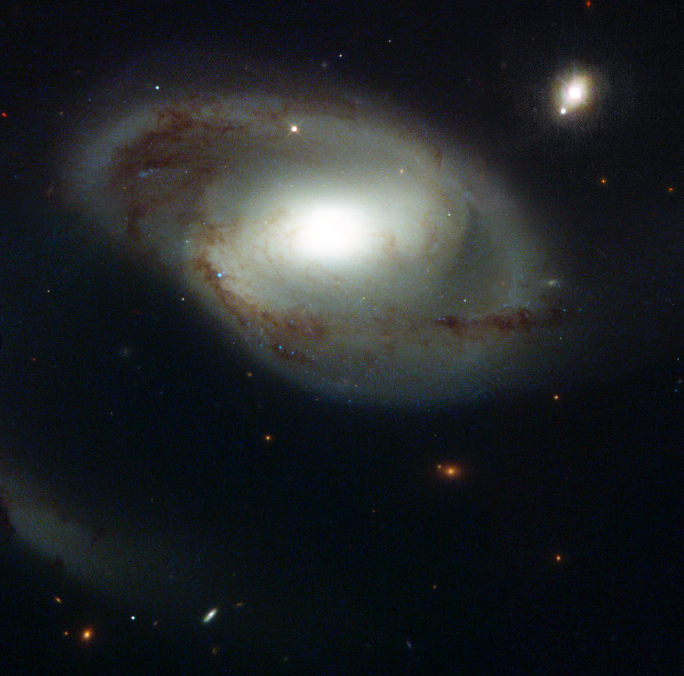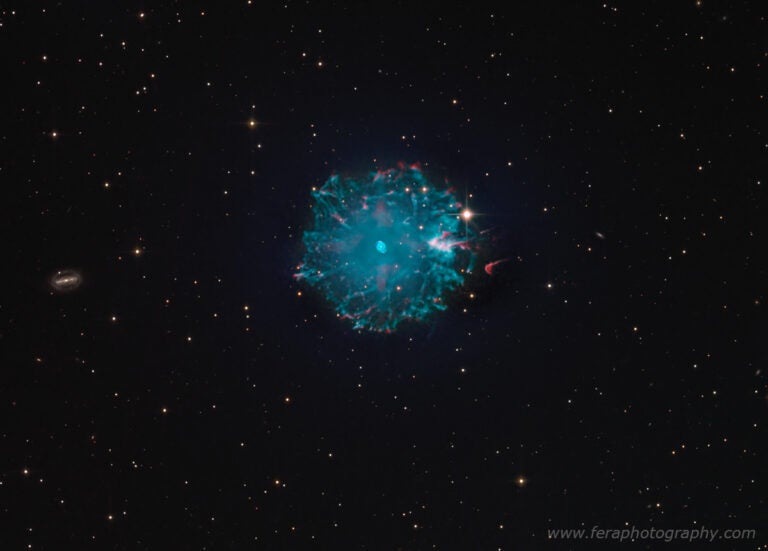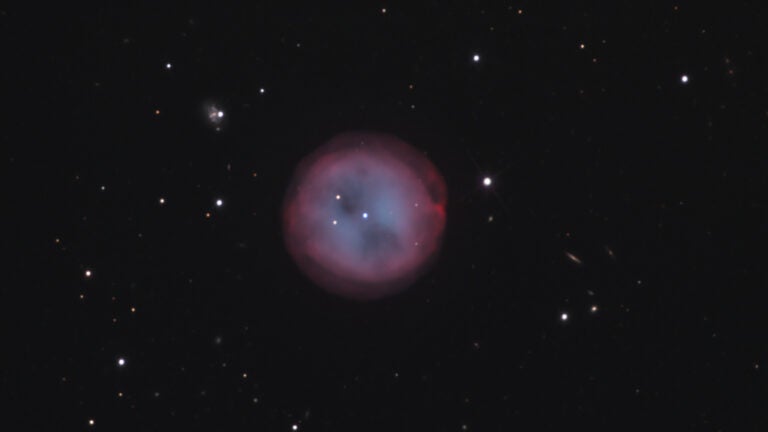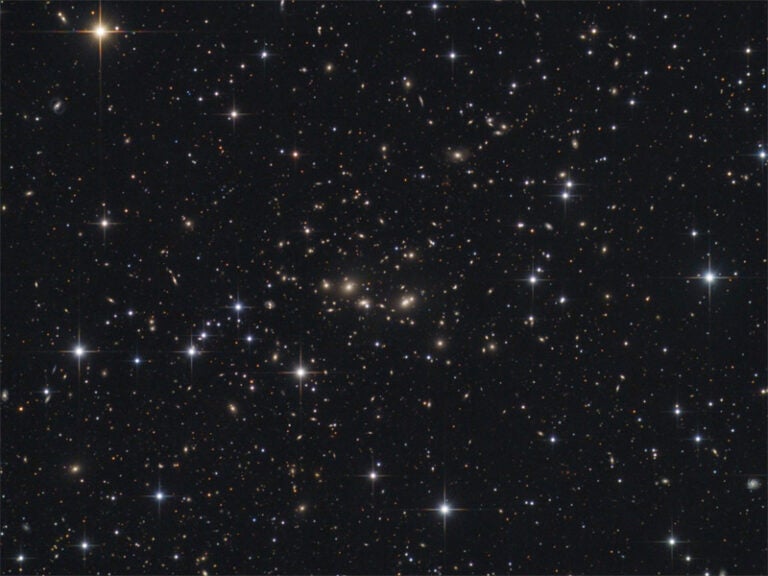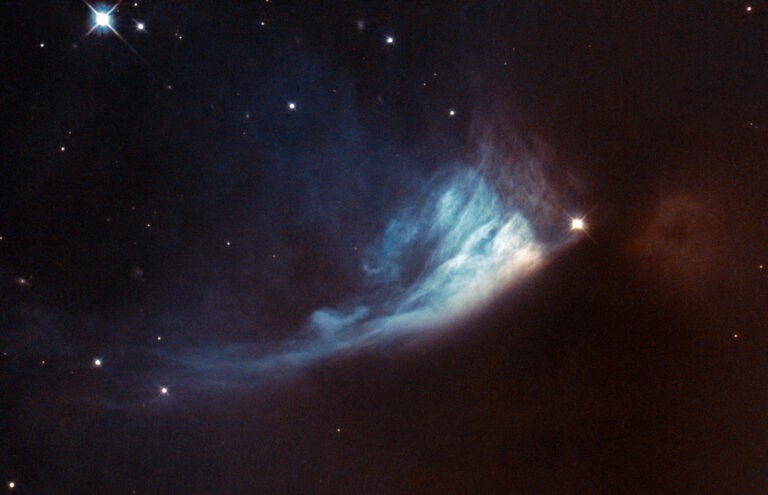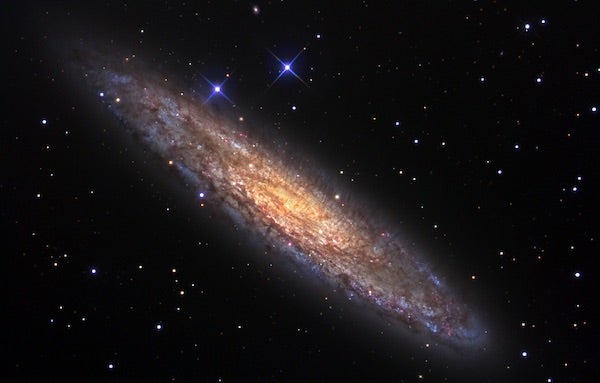
Last month, we visited the famous long-period variable star Mira. Although Mira’s constellation, Cetus the Whale, is inconspicuous even under dark skies, it holds a few other surprises for binocular observers.Let’s begin with the constellation’s brightest star, Beta (β) Ceti. That’s right – just as Rigel (Beta Orionis) outshines Orion’s alpha star, Betelgeuse, Beta Ceti beats Alpha (α) Ceti by half a magnitude (magnitude 2.0 versus 2.5). Although history is silent on how the German astronomer Johann Bayer made these errors when he was assigning Greek letter designations in his catalog of 1603, it might have been due to each star’s southern position.In addition to its Bayer discrepancy, Beta Ceti also has an identity crisis: It has two proper names. Traditionally, it is referred to as Deneb Kaitos, which means “tail of the whale” (or sea monster). But in 2016, the International Astronomical Union sanctioned an alternate name, Diphda, meaning “second frog.” Brighter Fomalhaut (Alpha Piscis Austrini) to the west is the “first frog.”Call it what you will, Beta Ceti puts on a colorful show through binoculars. That’s because Deneb Kaitos (I’m a traditionalist) is a type-K0 orange giant. In its prime, Beta Ceti was a type-A white main sequence star. But now, having exhausted its supply of fusible hydrogen in its core, it relies on helium fusion to generate energy. As it evolved, it also expanded in size and dropped in surface temperature to produce its golden glow.From Deneb Kaitos, shift 7° southeastward into neighboring Sculptor to find spiral galaxy NGC 253. The dominant member of the Sculptor Galaxy Group – the closest galactic collection to our own Local Group – NGC 253 is a showpiece in the Southern Hemisphere’s November sky, but proves challenging to spot from mid-northern latitudes.Take the journey to NGC 253 in steps. First, place Deneb Kaitos along the northern edge of your field of view. Doing so should center a small triangle of 5th-magnitude stars. Then step again by moving that triangle to the field’s northern edge. NGC 253 should then be just south of that field’s center.Location and sky conditions are important when it comes to viewing NGC 253. From my suburban yard, where the galaxy never gets higher than 25° above the light-polluted southern horizon, I can just make out a uniform glow through my 10×50 binoculars. But travel to a darker site and NGC 253 really pops. Through those same 10x50s, I spy a brighter central core surrounded by the galaxy’s fainter galactic disk. Moving up to my 16x70s makes those features more evident, while my 25x100s begin to hint at some texture, or mottling – evidence of the disk’s complexity, seen in images.While you are admiring NGC 253, glance to the southeast without shifting aim. Do you see a soft, circular glow? That’s the globular cluster NGC 288. It appears just 1¾° from NGC 253. Of course, their alignment is purely coincidental. NGC 253 is estimated to be 11.4 million light-years away, while NGC 288 is only 28,700 light-years from us.Although few observers make the effort to find NGC 288, binoculars show it readily – again, provided the sky is dark and the air is clear and dry. My 10x binoculars reveal its soft, circular glow, about half as large as NGC 253 is long.
Finally, let’s try for NGC 246, a great binocular challenge. This planetary nebula, 7° due north of Deneb Kaitos, is perfect for a Halloween stargaze because of its nickname, the Skull Nebula. The nebula’s odd structure in images, likely caused by shock waves as the expanding cloud interacts with its surroundings, lends it the appearance of a human skull.You’ll have to strain to see this one. Sources list it as 8th magnitude, but that is deceiving. Its relatively large diameter cuts its surface brightness, and therefore visibility. It has always evaded my 10×50 binoculars. I have, however, spotted its dim, oval disk through my tripod-mounted 16x70s using averted vision – but only after I jury-rigged two narrowband filters over the eyepieces.
I would enjoy hearing your experiences with these and other targets. Contact me through my website, philharrington.net. Until next month, remember that two eyes are better than one.

